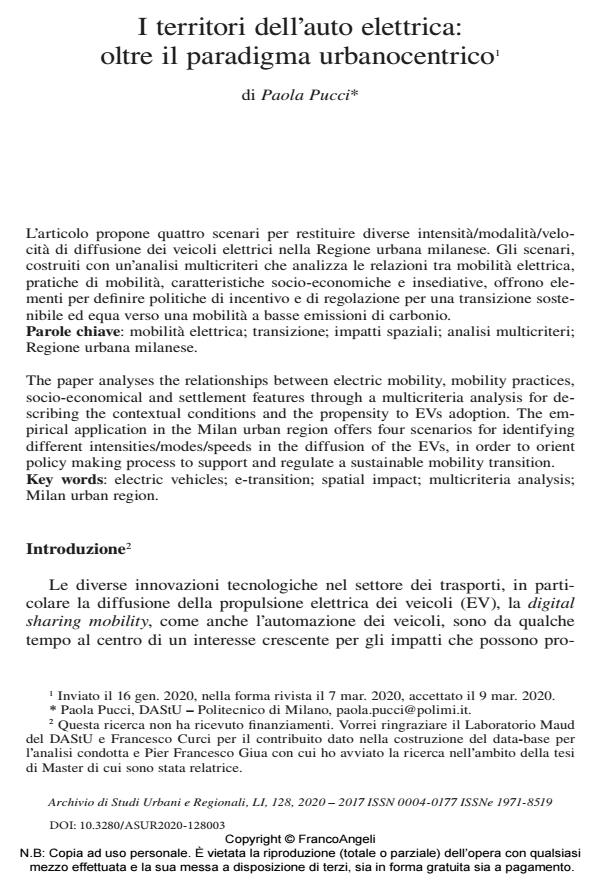I territori dell’auto elettrica: oltre il paradigma urbanocentrico
Titolo Rivista ARCHIVIO DI STUDI URBANI E REGIONALI
Autori/Curatori Paola Pucci
Anno di pubblicazione 2020 Fascicolo 2020/128
Lingua Italiano Numero pagine 24 P. 14-37 Dimensione file 311 KB
DOI 10.3280/ASUR2020-128003
Il DOI è il codice a barre della proprietà intellettuale: per saperne di più
clicca qui
Qui sotto puoi vedere in anteprima la prima pagina di questo articolo.
Se questo articolo ti interessa, lo puoi acquistare (e scaricare in formato pdf) seguendo le facili indicazioni per acquistare il download credit. Acquista Download Credits per scaricare questo Articolo in formato PDF

FrancoAngeli è membro della Publishers International Linking Association, Inc (PILA)associazione indipendente e non profit per facilitare (attraverso i servizi tecnologici implementati da CrossRef.org) l’accesso degli studiosi ai contenuti digitali nelle pubblicazioni professionali e scientifiche
L’articolo propone quattro scenari per restituire diverse intensità/modalità/velocità di diffusione dei veicoli elettrici nella Regione urbana milanese. Gli scenari, costruiti con un’analisi multicriteri che analizza le relazioni tra mobilità elettrica, pratiche di mobilità, caratteristiche socio-economiche e insediative, offrono elementi per definire politiche di incentivo e di regolazione per una transizione sostenibile ed equa verso una mobilità a basse emissioni di carbonio.
Parole chiave:Mobilità elettrica; transizione; impatti spaziali; analisi multicriteri; Regione urbana milanese.
Paola Pucci, I territori dell’auto elettrica: oltre il paradigma urbanocentrico in "ARCHIVIO DI STUDI URBANI E REGIONALI" 128/2020, pp 14-37, DOI: 10.3280/ASUR2020-128003